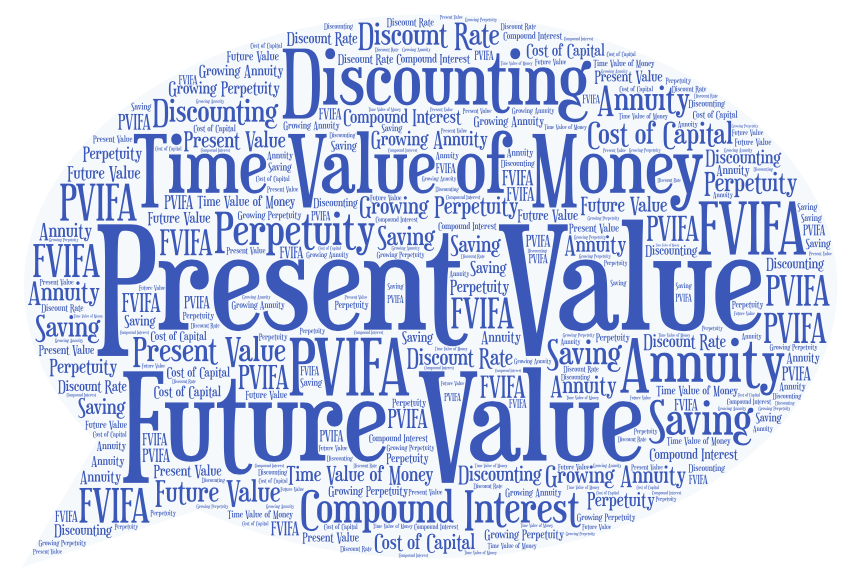Module Structure
Most investment projects involve cash flows that occur at different points in time. For example, a pension makes monthly payments after retirement, a stock could pay quarterly dividend, or a patent we own could generate annual royalty income. Similarly, a standard corporate investment might entail substantial cash outlays today, which will hopefully result in significant future profits.
It is not straightforward to compare cash flows that occur at different points in time. A dollar we receive today can be invested and thereby generates future income. In contrast, if we receive the same dollar in only, say, 10 years, we cannot invest it today and therefore forego interest income over the next 10 years. Money has a time value: A dollar today is more valuable than a dollar in the future.
The purpose of this module is to cover the basic principles behind the "time value of money." These principles constitute one of the core pillars of finance. Everybody who deals with money needs to understand the time value of money and how to incorporate it into investment decisions. This applies to complex corporate investments such as merger and acquisition (M&A) transactions. But it also applies to a very simple investment decision of young parents who open a savings account for their newborn child.

The module proceeds as follows:
- This introductory chapter motivates the topic and provides an overview of the module structure.
- Next, we turn to the concept of Future Values. We see how the value of money evolves over time when we invest it at a certain rate of return and we get to understand the powerful effect of compounding.
- Not all investments make annual interest payments. For example, a stock might pay quarterly dividends and rental payments generally occur monthly. Section 3 therefore shows how to deal with such investment decisions. In the process, we get to know the "Effective Annual Rate (EAR)" that allows us to compare investment projects with different interest payment schemes.
- In Section 4, we generalize the computation of Future Values. In particular, we show how to handle investment proposals that generate multiple cash flows at different points in time. With the knowledge from this section, we should be able to make the cash flows of virtually any investment project comparable at a future point in time.
- In Section 5, we turn the direction of our time travel. We learn how to compute the Present Value of future cash flows and future cash flow streams. Many serious investment decisions are based on a comparison of present values. The topics covered in this section will therefore be of crucial importance in project and firm valuation decisions.
- In the last two sections, we discuss useful shortcuts in the computation of present values and future values of investment proposals with special cash flow patterns. Section 6 starts with so-called "Perpetuities." As the name suggests, these are cash flow streams that run forever. We show that the valuation of such perpetuities is, in fact, very simple. Yet the ability to value perpetuities is rather powerful, as many finance applications use the concept of a perpetuity, including most valuations of mature companies.
- Finally, Section 7 shows how to compute the present and future values of Annuities. An annuity is an investment proposal that generates a constant (or a constantly growing) cashflow over a predefined period of time. Annuities are important elements of savings decisions and retirement planning. But they are also useful in the valuation of many assets, including bonds and other fixed-income securities.
- This introductory chapter motivates the topic and provides an overview of the module structure.
